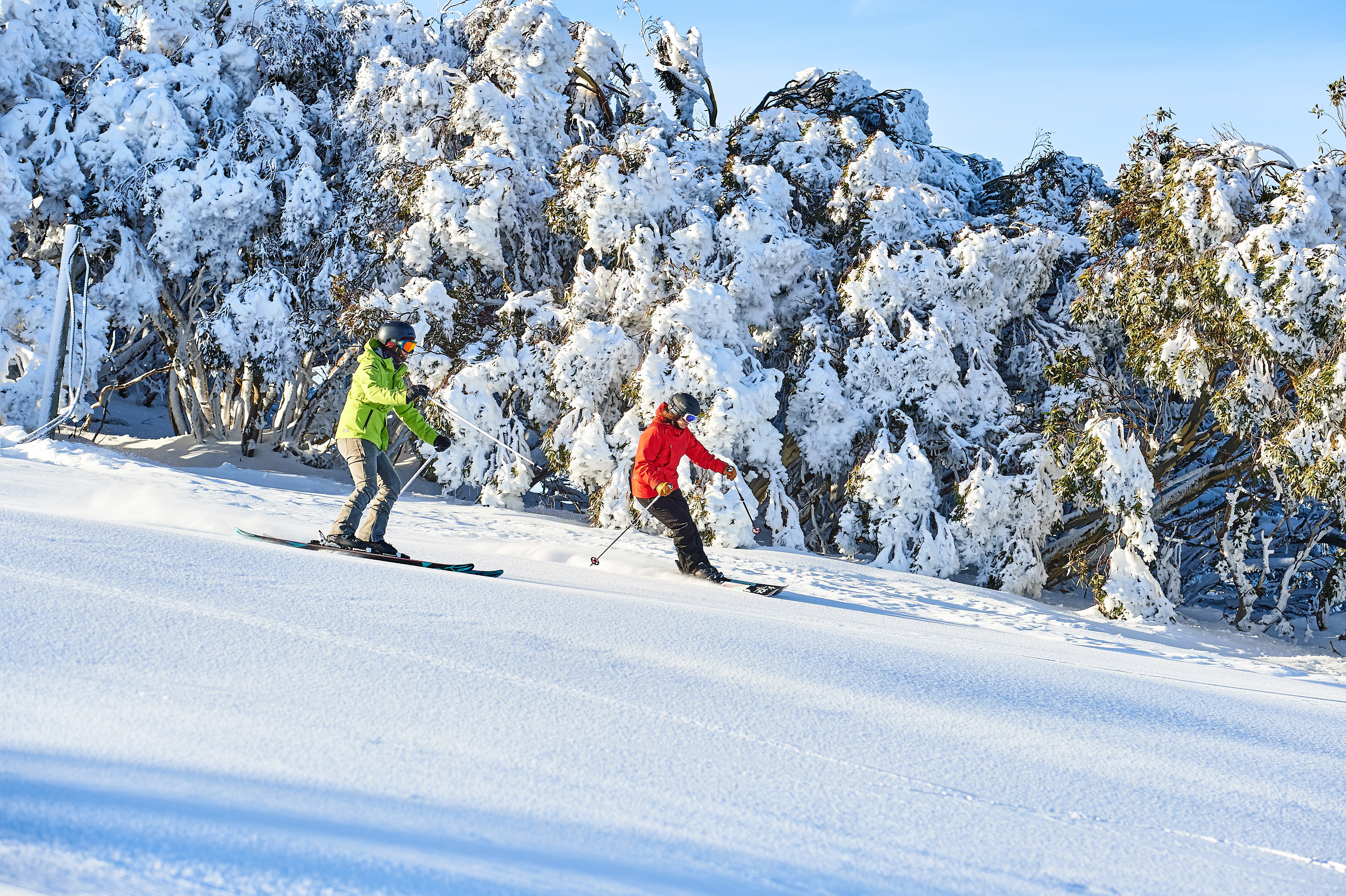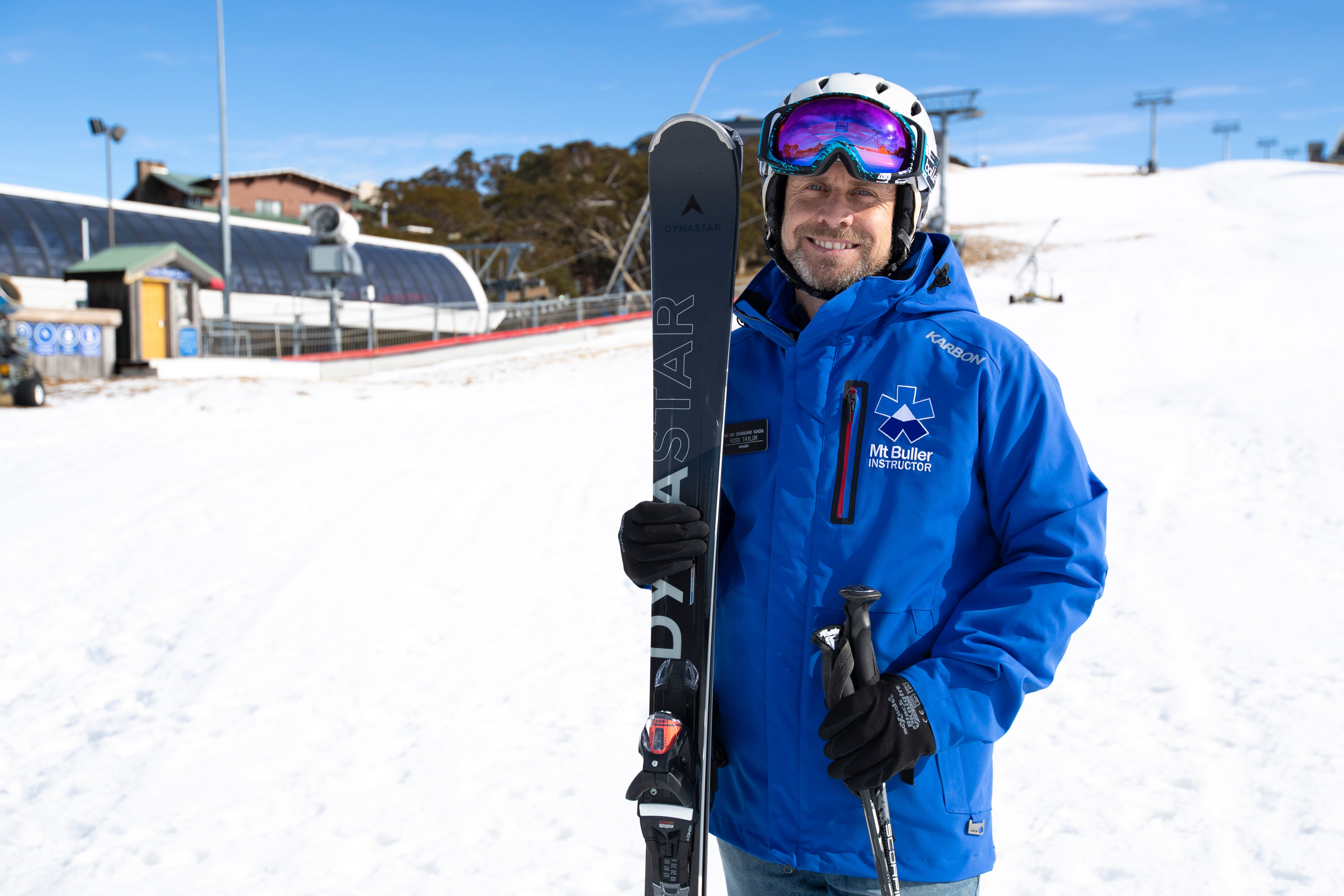Snow report
Ski operations are wrapped for 2025. Trails for walking and riding will progressively open from November.
Now
Today so far
Observations from BoM at 1707m
Last updated
16 December 2025
Forecast
Potential Snow This Week
- Summit
- Village
- Base

Browse accommodation, activities and rentals to organise your perfect trip and check out when you're ready.
Just 3hrs from Melbourne, a winter wonderland awaits. Perfect for a day trip - but you’ll want to stay longer!

Settle in for a true winter escape, with hotels, apartments and cosy lodges to make you feel at home.

Getting to Australia’s most accessible alpine resort is easy - drive up or hop on a coach.

Plan ride share & transfers. Free village & car park bus services to get around. Track the buses live.

Handy maps to get your bearings - everything’s just a walk or shuttle ride to the slopes!

Skiers first hit these slopes 100 years ago — and we’ve been sliding ever since. With 80km of runs, it’s your turn to ride!

Discover a mountain of fun activities both on and off the slopes to complete your winter holiday.
.jpg?width=4928&height=3280&name=MBAR_250616_467%20(1).jpg)
From gear to gifts, enjoy the convenience of on-mountain rental and retail to keep you sliding.

Bring your appetite and soak up the après vibes at bars, cafés, and restaurants. Who’s hungry?

Find the right pass for you and make the most of pre-purchase and off-peak savings.

A Season Membership unlocks unlimited days on the slopes and exclusive perks all season long.

From first-timers to seasoned riders, our Ski & Snowboard School has lessons for everyone to level up.

Nothing beats a one-on-one lesson tailored to you. Sharpen your skills, boost your confidence, and enjoy the VIP treatment.

Unsure of your level? Find the right lesson to match your skills and goals here.

Browse, compare, and book all lodge, hotel, and apartment options on Mt Buller and in the Mansfield region. Filter by price, features, location, and special offers.

Unlock exclusive deals like Kids Stay Free and our Snow Guarantee—special offers to make your trip even better.

Browse accommodation, activities and rentals to organise your perfect trip and check out when you're ready.


Just 3hrs from Melbourne, a winter wonderland awaits. Perfect for a day trip - but you’ll want to stay longer!

Settle in for a true winter escape, with hotels, apartments and cosy lodges to make you feel at home.

Getting to Australia’s most accessible alpine resort is easy - drive up or hop on a coach.

Plan ride share & transfers. Free village & car park bus services to get around. Track the buses live.

Handy maps to get your bearings - everything’s just a walk or shuttle ride to the slopes!

Skiers first hit these slopes 100 years ago — and we’ve been sliding ever since. With 80km of runs, it’s your turn to ride!
.jpg?width=4928&height=3280&name=MBAR_250616_467%20(1).jpg)
Discover a mountain of fun activities both on and off the slopes to complete your winter holiday.

From gear to gifts, enjoy the convenience of on-mountain rental and retail to keep you sliding.

Bring your appetite and soak up the après vibes at bars, cafés, and restaurants. Who’s hungry?

Find the right pass for you and make the most of pre-purchase and off-peak savings.

A Season Membership unlocks unlimited days on the slopes and exclusive perks all season long.

From first-timers to seasoned riders, our Ski & Snowboard School has lessons for everyone to level up.

Nothing beats a one-on-one lesson tailored to you. Sharpen your skills, boost your confidence, and enjoy the VIP treatment.

Unsure of your level? Find the right lesson to match your skills and goals here.

Browse, compare, and book all lodge, hotel, and apartment options on Mt Buller and in the Mansfield region. Filter by price, features, location, and special offers.

Unlock exclusive deals like Kids Stay Free and our Snow Guarantee—special offers to make your trip even better.
| Status | Lift/Type | Opening Times | Length |
|
|
Last updated
Last snowfall
Wheel chains required throughout the entire winter season.
| Status | Trail | Conditions | Length | Groomed |
|
● |
Ski operations are wrapped for 2025. Trails for walking and riding will progressively open from November.
Observations from BoM at 1707m
Last updated
THANK YOU
Thank you to everyone who shared time on the slopes this year. As many are aware, we've been celebrating 75 years of Mt Buller Ski Patrol this winter. We want to pass on our appreciation to those who have celebrated with us. We're stoked with the support we've received from our local community and those that make the trip to visit Mt Buller - especially those of you who donated to the volunteer ski patrol fund and rode for free on Sunday 5 October to celebrate the final day of the 2025 season.
After 121 days it's time to put the uniforms, skis and boards away. Wishing everyone a happy and safe summer. Come and explore Mt Buller this 'green season' if you can - it's glorious up here for riding, walks and RockWire climbs.
Look forward to catching up on the King's Birthday long weekend in June 2026 - let's do it all again.
Last updated:
Excellent - Complete snow cover with no exposed hazards.
Very Good - Complete cover of snow with occasional exposed hazards that do not impede skiing. The surface is dry or softening late in the day.
Good – Almost complete cover. Some exposed hazards that rarely impede skiing. The surface may vary from dry to soft.
Fair – Cover is extensive but not complete. There may be moderately sized exposed hazards including grass/vegetation, which are easily avoidable. Cover will most likely be soft and thin in areas.
Poor – Cover is broken and skiers are very limited in choice of lines. There may be exposed grass areas if the run is open. Cover is soft and thin; snow will most likely be brown in places.
Patchy – Insufficient cover for skiing and boarding. Only suitable for snowplay if the run is accessible. May involve a short walk from car park area.
No Snow – no snow
Fresh - Fresh snow newly fallen. Ranges from very heavy and wet, to very light and dry.
Dry - Light, fluffy snow. Powder-like.
Powder - Extremely light, dry, fluffy snow, providing no support to skis and snowboards.
Soft - Yielding to pressure from skis and snowboards. Snow could be sun-affected.
Packed - Fresh, packed snow.
Firm - Hard packed snow where the skis do not dig in much but the edges hold well
Firm or hard packed - In the transition stage to icy. Sharp edges help.
Icy - Clear and very hard. (May also include granular icy cover especially when describing the manmade snow after a night with a good freeze).
Softening - Transition from firm to soft snow.
Wet - Wet snow that is often heavy and slows sliding on skis or a snowboard.
Spring - Rough, icy, granular surface in the morning, then softens due to warm weather by mid-morning to soft and granular. (Depending on how warm, may become sticky and very soft during the afternoon, then icing up again in the late afternoon. Can be very good skiing in the late morning and early afternoon).
Our team at Mt Buller tell it straight. If the weather is a bit damp or the cover is variable, we'll say so.
The snow conditions and depth information is measured and reported daily by the Ski Patrol. They take their responsibility to give accurate information seriously. The snow reporting team then get that update live and online as quickly as possible so guests can plan their day.
The information in the snow reports is the information we'd share with friends and family (because that's what you are to us).
The language in snow reports is consistent and we use terminology agreed by the Australian Ski Areas Association and describes:
Mt Buller keeps investing in live webcams so you can check the conditions and look at any time of day.
To ensure transparency and build trust with guests, Australian Ski Areas Association members have agreed consistent reporting definitions. Mt Buller follows these guidelines so we talk about snow consistently.
This language is used in the same way across all resorts so conditions can be compared.
Conditions are rated daily and independently assessed by the Ski Patrol along with measured depths at three sites around the mountain.
Often there are variable conditions. For example cover may be fair in one area but very good on snowmaking areas.
In general, these terms provide a much more reliable indication of the snow conditions than measured snow depths which are taken in three undisturbed locations away from ski runs.
Meteorologists use weather models to make forecasts and it's not an exact science -- they can't collect data from the future! Mt Buller works closely with Jane's Weather to produce a tailored forecast and report for our unique alpine location. Check the weather report to see predictions in hourly increments, and specific to lower, village and summit altitudes.
Mt Buller has fast-changing weather patterns due to being a mountain that emerges from a low valley and rapidly climbs to 1805m at the summit. It's challenging to get forecasts completely accurate so use the information as a guide, and plan for the unexpected!
Being aware of changes in the weather is smart when you are in the mountains.
Look for rapidly growing puffy clouds (cumulonimbus) which signal storms may be brewing.
Take notice of changes in the wind direction and strength and check the forecast for indications of changes on the way such as cold fronts.
If, on a Declared Severe Weather Day, insufficient lifts are operating to allow guests to enjoy a maximum of five (5) rides a determination will be made (usually by 1pm) and guests are invited to apply for a replacement day pass. All the fine print about the policy is here.
